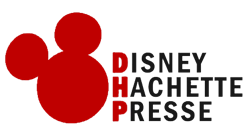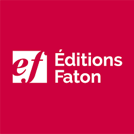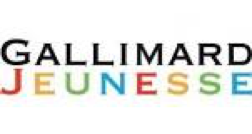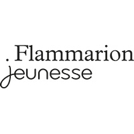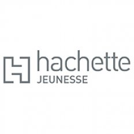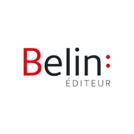Summary
The children's press market in France, aimed at readers under 18, is holding up well against the general decline in print media consumption. With 334 magazines and over 10 million readers, key players such as Bayard Presse/Milan, Disney Hachette Presse and Fleurus Presse dominate the sector. There is a noticeable gap in consumption between different demographic categories: 34% of the over-55s read the daily press, compared with just 12% of 15-24 year-olds.
Although the print press is facing declining physical sales and distribution problems, such as the bankruptcy of Presstalis in 2020, the market remains dynamic, with a wide variety of offerings, from daily to monthly publications. Digital versions of children's magazines are also growing, particularly during the health crisis, with subscriptions accounting for a significant percentage of sales. Despite this, children's literature is still very much alive, with a segment such as illustrated books accounting for 55% of sales. New titles continue to emerge, and the market is supported by events such as the Salon du livre et de la presse jeunesse, underlining France's cultural commitment to supporting the children's press.
Market trends in the French children's press sector
The children's press market in France continues to show resilience, in contrast to the general decline in print media consumption in Europe. Despite general trends suggesting a slowdown in print media engagement, with only 20% to 25% of French citizens reading print media on a daily basis, the country's children's press segment shows remarkable strength of character. This market caters for a wide range of age groups, from infants to teenagers, and encompasses three main genres: education, entertainment and adolescence. The children's press market is particularly strong, with over 10 million young readers representing around 65% of the population aged 1 to 19.
There are some 334 children's magazines in the market, reflecting its richness and diversity. This strength is also reflected in the sector's contribution to publishing categories, ranking second in terms of value, just behind literature. Even in the digital age, where children and teenagers are known to be heavy screen users, spending between 6 and 18 hours a week on digital media, print media is holding its own. A large majority of young tablet and smartphone users, around 59%, continue to consult children's magazines on a regular basis.
In terms of market structure, the children's press market is fairly concentrated, with a few key players dominating the scene. Leading groups account for over half of market sales, with heavyweights such as Hachette, Editis, Madrigall and Bayard. This concentration is reflected in the decline in the number of newspaper printing companies, from over 40 to around 43 by 2021.
In response to changing consumer behavior, the market has seen an increase in digital readership, particularly exacerbated by the recent health crisis. By 2022, digital versions of children's press publications should account for around 6% of total readership. Despite this, concerns about the potential negative effects of reading on screen could hold back this development, as some parents retain a preference for physical copies, particularly for daily editions that accumulate waste.
As far as book distribution is concerned, traditional sales outlets have been put to the test. The sector has seen a considerable reduction in the number of newsagents, which has halved from 40,000 in the 1980s to just over 20,000 in recent times. This contraction is reflected in the difficulties encountered by the major press distribution companies, which have led to the liquidation of entities such as Presstalis. key players shaping the landscape of the French children's press market
The French children's press market is a lively and dynamic sector, characterized by the presence of dominant publishing groups as well as several specialized and diversified publishers. These entities collectively select content to capture the imagination of young readers across France, cultivating a valuable cultural space within the French publishing industry.
Publishing giants in children's magazines
- The Bayard/Milan group is a leading force in the children's press market, exerting considerable influence with a wide range of publications for different age groups. Their portfolio contains an impressive assortment of educational, entertaining and teen-oriented content, which has consolidated their position as a pillar of French children's literature.
- Disney Hachette Presse (DHP)/Fleurus Presse is another titan of the industry, bringing with it the power of Disney's well-known and much-loved characters and stories. The merger with Fleurus Presse brings additional expertise and variety to their offerings, creating a multi-dimensional catalog that appeals to children's sense of wonder and adventure.
Nurturing young minds with a rich palette of publications
- Mondadori Magazines France provides niche offerings that cater to specific interests within the children's demographic, focusing on the curiosity of young minds looking to explore the world through print.
- Société Alsacienne de Publications and Éditions Dupuis bring local expertise and a traditional touch to the market, offering publications that not only entertain but also transmit regional values and learning opportunities to readers, fostering a sense of community and national pride.
- Éditions Faton occupies a unique place in giving children an insight into history and culture, while Éditions Jibéna & Cie and Enrick B. Éditions add diversity to the mix, contributing to the supply of perhaps more innovative and less conventional reading material.
- Presses d'Ile de France, Gallimard Jeunesse, Flammarion Jeunesse and Hachette Jeunesse each offer a treasure trove of literary creations ranging from timeless classics to contemporary tales, ensuring a rich selection that is both intellectually stimulating and emotionally engaging for youngsters.
Belin éditeur adds an educational dimension with works that often bridge the gap between learning and leisure, serving a dual purpose in the cognitive development of its readers.
to understand this market
Detailed content
 Inforamtion
Inforamtion
- Number of pages : 30 pages
- Format : Digital and PDF versions
- Last update : 10/02/2023
 Summary and extracts
Summary and extracts
1 Market overview
1.1 Market overview and definition
The children's press market covers all print titles aimed at an audience under 18 years of age. It can be segmented by age category: the early-learning press (0-6 years), the children's press (6-9 years), the junior press (8+ years), and the teen press (12+ years). The children's press boasts a wide variety of publications in three main genres: educational, entertaining and adolescent.
The children's press market in France is largely dominated by three national leaders: Bayard Presse/Milan, Disney Hachette Presse and Fleurus Presse.
There are currently 334 children's magazines, with over 10 million readers. Although, according to the ACPM, the print media market is in constant decline, as evidenced by the sharp drop in physical sales of newspapers and magazines, the children's press seems to be holding up rather well against the problems of distribution networks.
Historically, the first periodical for young people in France, Le Journal d'Éducation, was published in July 1768. The children's press developed in the second half of the 19th century, then evolved in the 20th century with technical progress and, in particular, the advent of images. In 1934, Le Journal de Mickey was published, still considered the oldest French children's magazine in existence.
1.2 A general decline in print media consumption in Europe
According to a survey conducted by the European Commission on media habits in the European Union (***) in ****, **% of Europeans claim to read the written press on a daily basis, down * percentage points on ****. [***]
This is part of a gradual decline in the consumption of written press in Europe: according to the ...
1.3 The children's press, a "French cultural exception
The French children's press is as powerful as ever
According to the Syndicat des Éditeurs de la Presse Magazine, in ****, **% of the **.* million children aged * to ** in France will read children's magazines, representing over ** million readers.
This is one of the richest and most varied markets in the world, with a ...
2 Demand analysis
2.1 A readership segmented by age group
There are over ** million readers of children's magazines, or **% of children aged * to **.
Young people regularly read children's magazines, especially children aged * to *. According to Ipsos MediaCT's Junior Connect' **** barometric study, a benchmark survey of young people under ** and their relationship with the media, nearlydias, almost **% of children aged *-* regularly ...
2.2 Young people continue to read regularly, despite hyperconnection
An online survey of *,*** children and young people under the age of **, the Junior Connect' **** by Ipsos MediaCT shows that young people's hyperconnectedness does not prevent them from continuing to read.
The study shows that **-** year-olds spend an average of ** hours a week on their screens, compared with * hours for ...
2.3 Young children and teenagers maintain a high average reading time
On the one hand, the amount of time spent reading children's magazines at different ages reflects a cyclical demand. Indeed, according to the Syndicat des Éditeurs de la Presse Magazine, reading times are significant: on average, a child spends *h** a week reading a children's magazine, mainly on Wednesdays, weekends and ...
2.4 The children's press maintains strong ties with its readers
Young people discover the children's press at an early age: **% of *-* year -olds and **% of *-** year -olds read at least one children's magazine a year. And they often attach great importance to it: **% of young people look forward to reading their magazine, and **% of them read it in one ...
3 Market structure
3.1 A relatively concentrated market
The children's publishing sector is no exception to the phenomenon of concentration affecting the entire publishing industry. While the Ricochet-Jeunes website lists *** children's publishers, * main groups account for over **% of market sales[***]:
The Hachette group (***) ; Editis group (***) ; Madrigall group (***) ; Bayard group (***).
Market share of the main children's press groups France, ****, in Source: ...
3.2 Production in paper format
There has been a general decline in print media sales in France, as shown by the graph below on the evolution of Diffusion France Payée (***) for the mainstream press.
Evolution of paid circulation in France for mainstream print media France, ****-****, in Source: ****
Similarly, the number of companies in the ...
3.3 Digital support replaces paper format
Share of online newspaper and magazine readers France, ****-****, in % Source: ****
This graph shows that the share of children reading their magazine with its digital version is growing strongly. While the digital version of children's press represented only *.**% of total reading media in ****, this percentage will rise to *.**% in ****. The health ...
3.4 Traditional distribution suffering
Until July ****, there were two major companies sharing the press distribution market in France:
Source: ****
Presstalis recorded an operating deficit of ** million euros in ****. However, on July *, ****, the Paris Commercial Court placed Presstalis in compulsory liquidation. France Messagerie was created and took over part of Presstalis' assets.
The judicial liquidation of ...
4 Offer analysis
4.1 A wide variety of offers from daily to monthly
Panorama of the leading children's dailies
Source: ****
Overview of the leading weekly and fortnightly children's magazines
Source: ****
Overview of the main monthly or longer periodicals in the children's press
Source: ****
New titles continue to appear every year
Although some titles are very old, such as Le Journal de Mickey, first published ...
4.2 France's most popular children's books and magazines
According to a Gfk study for ****, illustrated children's books will account for **% of sales, followed by children's novels (***). Manga are not included in children's books, but their current momentum is very good: they will account for ** million books purchased in ****.
Market share of different children's press segments by volume France, ****, in Source: ...
4.3 Prices vary according to store type
If you look at the main headlines on the sitePressedeFrance in ****, we can see that the average unit price of the few best-selling issues by age category is *.**€. Prices range from €* for Le Monde des ados to €**.** for Animeland.
Consumer prices vary significantly according to the type of distribution (***).
Source: ****
According ...
4.4 The digital trend, or how the children's press is resisting screens
The children's press, a cultural specificity
The sector can count on flagship titles and timeless bestsellers, such as J'aime lire, Petit Ours Brun and Super Picsou Géant. [***]
The strength of subscription offers
TheSyndicat des Éditeurs de la Presse Magazine indicates that **% of children's press sales are by subscription, compared with ...
5 Regulations
5.1 Specific regulations that differ from other publishing sectors
In France, two laws regulate the distribution of children's publications.
The law of July **, **** on publications aimed at young people, amended by article ** of the decree of December **, **** and by the law of January *, ****.
Article *:" The publications referred to in Article * must not include any illustration, story, chronicle, column or insert ...
6 Positioning the players
6.1 Segmentation
- Bayard Presse Groupe
- Unique Heritage Media- DHP
- Alsacienne de Publications L'Alsace
- Éditions Dupuis (Media Participations)
- Éditions Faton
- Enrick B. Editions
- Les Presses d’Ile de France
- Gallimard Jeunesse (Madrigall Groupe)
- Flammarion
- Hachette Jeunesse
- Belin Education (Humensis)
- Presstalis
- Les Messageries lyonnaises de presse
- Éditions Jibéna & Cie
- Reworld Media
- Lunii
- Editis
- Editions Albert René (Hachette Groupe)
- Atelier Imaginaire
 List of charts
List of charts
- Percentage of the population reading the written press every day or almost every day
- Percentage of the population reading the written press every day or almost every day, by country
- Frequency of print media reading, by age
- Percentage of children and adolescents who have read at least one children's magazine title
- Important reading times for all youth segments
All our studies are available online in PDF format
Take a look at an example of our research on another market!
Latest news
Companies quoted in this study
This study contains a complete overview of the companies in the market, with the latest figures and news for each company. :
 Choosing this study means :
Choosing this study means :
Access to more than 35 hours of work
Our studies are the result of over 35 hours of research and analysis. Using our studies allows you to devote more time and added value to your projects.
Benefit from 6 years' experience and over 1,500 industry reports already produced
Our expertise enables us to produce comprehensive studies in all sectors, including niche and emerging markets.
Our know-how and methodology enable us to produce reports that offer unique value for money.
Access to several thousand articles and paid-for data
Businesscoot has access to all the paid economic press as well as exclusive databases to carry out its market research (over 30,000 articles and private sources).
To enhance our research, our analysts also use web indicators (semrush, trends, etc.) to identify market trends and company strategies. (Consult our paying sources)
Guaranteed support after your purchase
A team dedicated to after-sales service, to guarantee you a high level of satisfaction. +44 238 097 0676
A digital format designed for our users
Not only do you have access to a PDF, but also to a digital version designed for our customers. This version gives you access to sources, data in Excel format and graphics. The content of the study can therefore be easily retrieved and adapted for your specific needs.
 Our offers :
Our offers :
the youth press market | France
- What are the figures on the size and growth of the market?
- What is driving the growth of the market and its evolution?
- What is the positioning of companies in the value chain?
- Data from several dozen databases
Pack 5 études (-15%) France
- 5 études au prix de 75,6€HT par étude à choisir parmi nos 800 titres sur le catalogue France pendant 12 mois
- Conservez -15% sur les études supplémentaires achetées
- Choisissez le remboursement des crédits non consommés au terme des 12 mois (durée du pack)
Consultez les conditions du pack et de remboursement des crédits non consommés.





 After a long slumber, Gaston Lagaffe is back in comics - 22/11/2023
After a long slumber, Gaston Lagaffe is back in comics - 22/11/2023
 Asterix, Hachette's cash machine - 26/10/2023
Asterix, Hachette's cash machine - 26/10/2023
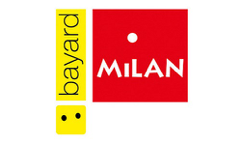 Bayard Group moves to Malakoff - 28/09/2023
Bayard Group moves to Malakoff - 28/09/2023
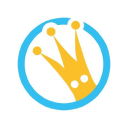 Lunii's storytellers are 100% French - 23/09/2023
Lunii's storytellers are 100% French - 23/09/2023
